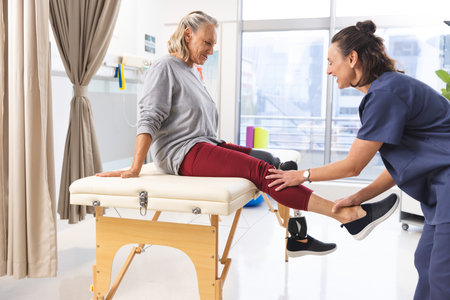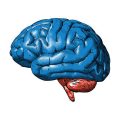Introduction to Chronic Pain in the Elderly
Chronic pain is an increasingly common concern among the UK’s ageing population, shaping not only individual lives but also health and social care systems. Recent statistics indicate that nearly 50% of adults over 65 in the UK experience persistent pain, with prevalence rates rising sharply with age. For many older adults, chronic pain is not just a physical sensation—it influences emotional wellbeing, independence, and overall quality of life. In British society, where there is often a cultural tendency towards stoicism and “getting on with it”, pain in older adults can be underreported or misunderstood, especially as aches and discomforts are too often dismissed as a natural part of ageing. This oversight can lead to inadequate assessment and support, leaving many elderly individuals suffering in silence. As our population ages—a trend reflected across England, Scotland, Wales, and Northern Ireland—the impact of chronic pain extends beyond individuals to families, communities, and public services. The NHS faces increasing demand for tailored interventions that respect both medical needs and personal dignity. Understanding the scale and nuances of chronic pain among older people is therefore crucial for healthcare professionals, policymakers, and anyone involved in elder care within the UK.
2. Challenges in Pain Assessment Among Elderly Patients
Assessing chronic pain in elderly patients within the UK presents a unique set of challenges that can complicate both diagnosis and ongoing management. A combination of communication barriers, comorbidities, and the tendency for underreporting pain frequently results in inadequate assessment and suboptimal care. Understanding these obstacles is crucial for healthcare professionals striving to deliver patient-centred interventions.
Communication Difficulties
Many elderly patients experience cognitive decline, hearing impairment, or speech difficulties, which can hinder their ability to describe pain accurately. In some NHS settings, time constraints during GP appointments further compound this issue, limiting opportunities for thorough dialogue. Additionally, language barriers may exist for those from diverse backgrounds, despite the UKs multicultural society. These factors can all contribute to misinterpretation or underestimation of pain severity.
Common Communication Barriers and Potential Solutions
| Barrier | Description | UK-Specific Solution |
|---|---|---|
| Cognitive Impairment | Dementia or delirium affecting self-reporting | Use of validated tools like the Abbey Pain Scale in care homes |
| Hearing/Speech Difficulties | Difficulty understanding or expressing pain symptoms | Provision of hearing aids; use of visual pain scales such as Wong-Baker Faces |
| Language/Cultural Barriers | Lack of English proficiency or cultural reluctance to discuss pain | Access to NHS interpreter services; culturally sensitive assessment training |
Comorbidities Complicating Assessment
The elderly population often presents with multiple chronic conditions—diabetes, arthritis, cardiovascular disease—which can mask or mimic symptoms of chronic pain. In UK practice, GPs and community nurses must distinguish between overlapping symptoms to avoid misdiagnosis. The presence of polypharmacy also raises concerns about drug interactions and side effects influencing pain perception and reporting.
Key Comorbidities Affecting Pain Assessment in the UK Elderly Population
- Dementia: Alters typical pain expression; reliance on behavioural cues required.
- Depression: Common but underdiagnosed in the UK; may exacerbate perceived pain.
- Arthritis: High prevalence leads to normalisation of chronic discomfort among older adults.
- Cancer: Pain often attributed solely to malignancy, overshadowing other sources.
Underreporting: A Cultural and Systemic Issue
Elderly patients in the UK often underreport pain due to stoicism, fear of being a burden on the NHS, or misconceptions that pain is a natural part of ageing. This is particularly pronounced among those who lived through wartime Britain or have limited health literacy. Healthcare practitioners must be proactive in asking targeted questions and using structured assessment tools rather than relying solely on patient-initiated complaints.
Summary Table: Main Barriers to Effective Pain Assessment in UK Elderly Care Settings
| Barrier Type | Description/Impact |
|---|---|
| Communication Difficulties | Makes accurate self-reporting challenging; increases risk of missed diagnosis. |
| Comorbidities & Polypharmacy | Masks or mimics pain symptoms; complicates treatment planning. |
| Cultural/Systemic Underreporting | Pain is downplayed; reduced likelihood of appropriate intervention. |
Addressing these complex barriers requires a multi-pronged approach tailored to UK healthcare settings—combining clinical expertise, culturally competent care, and effective use of validated assessment tools—to ensure older adults receive the comprehensive pain management they deserve.

3. Standardised Assessment Protocols in the UK
When it comes to managing chronic pain in elderly patients across the UK, using robust and standardised assessment protocols is paramount. The NHS has set out comprehensive guidelines that ensure clinicians take a thorough and evidence-based approach, avoiding assumptions or overlooking key factors unique to older adults. One of the cornerstones of best practice is a holistic pain assessment, which not only focuses on the physical aspects of pain but also considers psychological, social, and environmental influences.
NHS Guidelines for Chronic Pain Assessment
The NHS recommends structured assessments at every stage—from initial presentation through ongoing management. This typically involves detailed patient histories, including onset, duration, character, and impact on daily living. Practitioners are encouraged to use open-ended questions to understand how pain affects sleep, mood, mobility, and independence—areas often particularly important to elderly patients striving to maintain quality of life.
Validated Tools Commonly Used
Several validated scales are regularly employed in UK clinical practice. The Brief Pain Inventory (BPI) and McGill Pain Questionnaire allow for quantifiable measurement of pain intensity and its impact. For those with cognitive impairment—a common challenge in geriatric care—the Abbey Pain Scale or PAINAD (Pain Assessment in Advanced Dementia) offer practical frameworks for observation-based evaluation. These tools have been adapted and validated specifically for use in older populations, ensuring reliability even when communication barriers exist.
Multidisciplinary Input
A unique strength of the UK’s approach is the integration of multidisciplinary teams. GPs work closely with physiotherapists, occupational therapists, pharmacists, and mental health professionals to build a complete picture of an individual’s pain experience. This collaborative ethos aligns with NICE guidance on person-centred care and helps prevent underassessment or misdiagnosis—issues that have historically affected older adults in pain management pathways.
From my own experience working within NHS services, I’ve found that these protocols not only promote thoroughness but also empower elderly patients to voice their experiences more confidently. Using familiar language, giving enough time during consultations, and consistently applying these assessment tools foster trust and ensure no aspect of chronic pain goes unnoticed.
4. Best Practice Interventions and Multidisciplinary Approaches
When it comes to managing chronic pain in older adults across the UK, best practice hinges on a balanced combination of pharmacological and non-pharmacological interventions, always delivered by a collaborative multidisciplinary team. The realities of NHS resources and the diversity of patient needs mean that a one-size-fits-all approach simply isn’t effective. Instead, tailored care plans, underpinned by regular review and holistic assessment, are essential.
Pharmacological Interventions
In the UK, medication management for elderly patients with chronic pain is guided by NICE guidelines and local NHS Trust protocols. The aim is always to maximise pain relief while minimising side effects—especially given the increased vulnerability to adverse drug reactions in this population. Commonly prescribed medications include:
| Drug Class | Examples | Notes in Elderly Care |
|---|---|---|
| Paracetamol | Regular or as-needed dosing | Often first-line due to safety profile; monitor for liver function if long-term use |
| Opioids (weak/strong) | Codeine, Morphine (low dose) | Used cautiously; risk of sedation, falls, constipation |
| Adjuvant drugs | Amitriptyline, Gabapentin | Mainly for neuropathic pain; start low, go slow |
| Topical agents | Lidocaine patches, Capsaicin cream | Useful where systemic side effects are a concern |
Polypharmacy remains a significant issue; therefore, routine medication reviews—often involving clinical pharmacists—are vital to ensure ongoing appropriateness and effectiveness.
Non-Pharmacological Interventions
The British approach places strong emphasis on non-drug strategies for chronic pain management. These not only address physical symptoms but also support mental wellbeing and social participation. Interventions include:
- Physiotherapy: Tailored exercise programmes, mobility aids, posture training.
- Cognitive Behavioural Therapy (CBT): Delivered individually or in groups; addresses fear-avoidance beliefs and coping skills.
- Pain education sessions: Often run by specialist nurses or pain clinics to empower self-management.
- Occupational therapy: Home adaptations and strategies to maintain independence.
- Complementary therapies: Acupuncture, TENS machines—supported by some NHS Trusts as adjuncts.
The Importance of Teamwork in Care Delivery
A core strength of UK best practice is its commitment to multidisciplinary teamwork. Pain clinics typically involve GPs, geriatricians, physiotherapists, psychologists, occupational therapists, pharmacists, and sometimes social workers or community nurses. This collaborative model ensures comprehensive care planning and monitoring. Regular case conferences and shared care records help keep everyone on the same page—including patients and their families.
Navigating Barriers Through Collaboration
Despite service pressures within the NHS, multidisciplinary working enables creative solutions: for example, joint home visits or virtual MDT meetings can help reach housebound older adults who might otherwise struggle to access services. In my own experience, it’s this willingness to pool expertise—across professions—that often makes the difference between ‘good enough’ care and truly person-centred outcomes.
5. Role of Primary Care and Community Support
Collaboration at the Heart of Chronic Pain Management
In the UK, the management of chronic pain in elderly patients is very much a team effort centred on primary care. General Practitioners (GPs) are typically the first port of call for older adults experiencing ongoing pain. Their role is not just about prescribing medications, but also about coordinating a wider support network that includes practice nurses, pharmacists, physiotherapists, and community services.
The GP’s Perspective: More than Just Prescriptions
From my own experience in practice, elderly patients with chronic pain rarely present with simple issues. GPs carry out thorough assessments, considering medical history, social circumstances, and mental health alongside physical symptoms. Regular reviews help to monitor pain levels, side effects from medication, and how well current interventions are supporting quality of life. Importantly, GPs act as advocates—ensuring their patients’ voices are heard and that care remains holistic and person-centred.
Nurses: Day-to-Day Monitoring and Support
Practice nurses play a pivotal role in managing chronic pain, particularly for housebound or frail patients. They visit patients at home to assess mobility, check for complications such as pressure sores or medication side effects, and provide practical advice on daily living. Their ongoing relationship with patients means they often pick up on subtle changes that might otherwise go unnoticed.
Community Services: Extending Care Beyond the Surgery
Community-based teams—including occupational therapists, physiotherapists, and social care workers—are vital in enabling elderly people to stay independent and engaged. For example, local falls prevention programmes or gentle exercise classes can reduce pain-related disability. Social prescribers may connect patients with befriending services or volunteer drivers to tackle isolation—a frequent companion to chronic pain among older adults.
Integrated Working Improves Outcomes
The most effective support arises when these professionals collaborate seamlessly. Regular multidisciplinary meetings allow information sharing and joint care planning. In my own practice, we’ve seen how prompt communication between the GP surgery and district nursing teams can prevent unnecessary hospital admissions for severe pain crises. Ultimately, this joined-up approach helps elderly patients maintain dignity and a better quality of life while living with chronic pain.
6. Navigating Systemic Barriers and Empowering Patients
Chronic pain management in the elderly within the UK is not just a clinical challenge but also an issue deeply intertwined with systemic barriers, particularly ageism and limited resources. The NHS, while comprehensive, often faces pressures that inadvertently disadvantage older adults experiencing persistent pain.
Ageism: Recognising and Challenging Stereotypes
One significant barrier is ageism—subtle or overt biases which can lead to the underestimation of pain severity in elderly patients or assumptions that chronic pain is simply ‘part of getting old’. These attitudes may result in less aggressive assessment or inadequate intervention. Clinicians must remain vigilant against these stereotypes, ensuring every elderly patient’s pain is taken seriously, thoroughly assessed, and managed with dignity.
Resource Allocation within the NHS
The reality of finite NHS resources means that access to specialist pain clinics, multidisciplinary teams, or advanced interventions can be limited. Waiting times for referrals are often lengthy, and community-based services might lack consistent funding. In this context, advocating for equitable distribution of resources and prioritising person-centred care becomes crucial. It requires both systemic advocacy from healthcare professionals and informed engagement from patients and carers.
Empowering Elderly Patients and Their Carers
Empowerment starts with information. Elderly patients—and their carers—need clear explanations about chronic pain mechanisms, treatment options, and self-management strategies. Tools like NHS-provided leaflets, online resources (such as NHS Inform), and structured pain education sessions empower individuals to make informed decisions about their care. GPs and nurses play a vital role by involving patients in goal-setting, encouraging open communication about treatment preferences and concerns.
Tools and Strategies for Empowerment
Practical interventions include the use of patient-held pain diaries to track symptoms, regular medication reviews to optimise therapy and minimise side effects, and carer support groups to reduce isolation and share coping strategies. Digital platforms—like the NHS App—can improve access to health records, appointment booking, and repeat prescriptions, making it easier for elderly patients to navigate their own care pathways.
Towards a Collaborative Approach
Navigating these systemic challenges demands a collaborative mindset between healthcare teams, social care providers, voluntary organisations, and families. By recognising barriers such as ageism and resource constraints—and actively working to overcome them—we can empower elderly people living with chronic pain to take an active role in their health journey within the unique context of the UK’s NHS.
7. Future Directions and Ongoing Research
As the UK faces an ageing population, the management of chronic pain in elderly individuals has become a pressing public health concern. Emerging trends in both clinical practice and research are shaping the future landscape of pain care for older adults across Britain.
Emerging Trends in Chronic Pain Management
In recent years, there has been a noticeable shift towards multidisciplinary and personalised approaches to pain management. This means more clinics are incorporating physiotherapists, occupational therapists, psychologists, and pharmacists into their teams to create tailored intervention plans. Digital health innovations—such as remote monitoring tools and telemedicine consultations—are also gaining traction, improving access to specialist care for elderly people living in rural or underserved areas of the UK.
Ongoing UK-Based Research
The UK is at the forefront of research addressing chronic pain in the elderly. Major universities and NHS trusts are collaborating on studies that investigate everything from new pharmacological agents with reduced side effects to non-pharmacological interventions such as mindfulness-based stress reduction, group exercise programmes, and community social prescribing initiatives. The NIHR (National Institute for Health and Care Research) continues to fund large-scale projects examining the long-term efficacy of integrated pain management pathways specifically designed for older patients.
Innovative Assessment Protocols
Research is also focused on refining assessment protocols to better identify and monitor chronic pain in older adults, especially those with cognitive impairments like dementia. Tools that combine self-reporting with observational methods are being piloted across several NHS Trusts, aiming to ensure no patient’s pain goes unnoticed or untreated.
Policy Priorities for Better Management
On the policy front, there is a growing recognition of the need for national guidelines that address the unique needs of elderly patients living with chronic pain. The NHS Long Term Plan emphasises person-centred care and prevention, pushing for earlier identification and holistic treatment strategies. There is also advocacy for increased training among healthcare professionals in geriatric pain assessment and management, alongside investment in community-based resources.
Looking Ahead
The future direction for managing chronic pain in older adults within the UK will undoubtedly be shaped by continued collaboration between researchers, clinicians, policymakers, and—most importantly—patients themselves. By embracing innovation while staying grounded in compassionate, evidence-based practice, the UK aims to lead the way in ensuring that its elderly population can live with dignity and minimal suffering from chronic pain.

